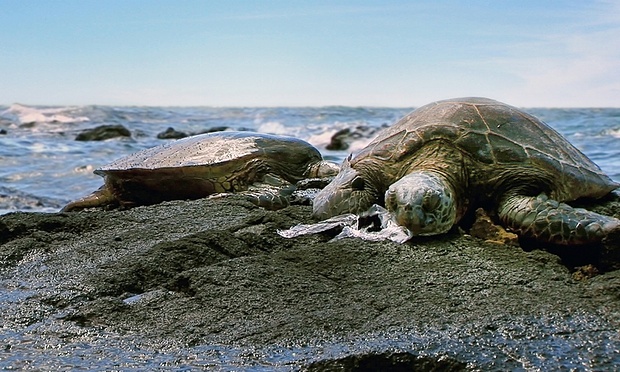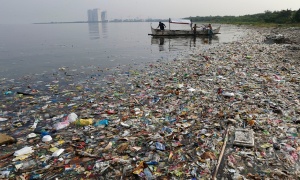10 Things We Learned About Tackling Plastic Ocean Waste

Plastic Never Dies
“Every piece of plastic we ever produce will stay on this planet,” warns Cyrill Gutsch, founder of Parley for the Oceans.
Just putting your bottles in the right bins, doesn’t necessarily mean they will end up being recycled if the area doesn’t have the infrastructure to manage plastic.
Earlier this year an NGO warned we could end up with ‘as much plastic in our oceans as fish’. Here is a summary of what the experts said in an online debate on plastic pollution.
1. We can’t keep up with waste management
More than 50% of ocean plastics are coming from rapidly developing geographies around the world, where population growth and increased plastics consumption is outpacing the capacity to manage waste. Even in the US, waste infrastructure is set up for a material mix that’s less relevant today.
2. We need action from governments and businesses
Tackling ocean waste will require a range of different policies that drive manufacturer participation, combined with voluntary efforts by companies. Key to this will be global corporate leaders that recognise the scale of the problem and its local impact.
3. It’s an economic as well as an environmental issue
We’re told of ocean plastic strangling seals and turtles swallowing it, but the mainstream media rarely frame the problem as an economic one.
“We need to show [companies] that designing in a way that holds the value of the materials makes economic sense”.
4. Designers and recyclers often feel helpless
Just designing a product with its end-of-life in mind could have a big impact, says Jenna Jambeck, assistant professor of environmental engineering at the University of Georgia. She says that “so many issues [are] caused downstream from not considering this point in a product’s life cycle”.
5. There are global solutions to this global problem
One way to solve the end-of-life problem would be to make simple products, such as yoghurt pots and shampoo bottles, from a single material that is recyclable around the world, suggests Alexis Haas, director of sustainability at Adidas.Currently, consumer goods are mostly made from mixed plastics, which are only suitable for downcycling.
6. There are also local solutions
Ben Kneppers, co-founder of Bureo Skateboards, explains that an artisanal fishing village in Chile was left with no choice but to burn or discard its old fishing nets. In giving the community the resources and opportunity to return nets for recycling, the company says it has prevented waste, created jobs and captured a valuable material for its skateboards.
7. We have to eliminate the ‘ick factor’
Shubhankar Ray, global brand director at G-Star RAW, says: “People buy what they desire in fashion, so eco-clothing needs to be cool and sexy to drive desire.”
8. Labelling plastic bags like tobacco is not helpful
Adding a warning sign to plastic bags about the damage they can cause may not be a great solution. While Kneppers agrees that a lack of education is part of the problem, he believes that we would better engage consumers with positivity, by highlighting how small actions can protect the places we love.
9. A ban might not be best
“We need to be careful when proposing an all-out ban on any one material,” warns Nicholas Mallos, director of the Trash Free Seas programme. “If material substitutes are available to replace a given non-recyclable plastic, like cellophane, then it’s key to look at the entire life cycle and ensure we don’t replace one unintended environmental impact with another.”
10. Together, we can take plastics off the market
“The problem we are facing is that plastic is simply the wrong material – it needs to be reinvented,” says Gutsch. “There is no need to use plastic straws, plastic utensils, plastic bottles, plastic bags … We can take these products off the market right away. By doing so, we show there is a movement happening, which motivates the research and development labs for material development.”
To read the entire article click here.











